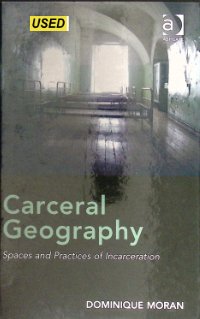By Kelly Lyn Mitchell
This report is one in a series of reports for the Aligning Supervision Conditions with Risk and Needs (ASCRN) project, the goal of which is to reduce probation and parole revocations and reorient community supervision toward promoting success by changing the way probation and parole conditions are imposed. Conditions are requirements that a person on probation or parole must adhere to while serving a period of community supervision. For people on parole, this occurs after the person has served time in prison and is released into the community for a post-prison period of supervision. For people on probation, this period of supervision occurs in the community in lieu of incarceration. The hypothesis for this project was that if probation and parole conditions targeted individuals’ criminogenic needs and were based upon risk level, individuals on supervision would be more successful. However, to move to this form of condition setting, we first needed to understand how conditions were being determined and what role, if any, risk and needs assessments played in the condition-setting process. This report sets forth our findings on the parole condition-setting process utilized by the judges when sentencing a person to probation in Johnson County, Kansas. The report also explores what role, if any, risk and needs assessments play in the condition-setting process. The findings in this report are based primarily on a legal and policy review, and interviews conducted in 2021 with relevant stakeholders who we presumed would have a hand in recommending or imposing probation conditions, including judges, prosecutors, defense attorneys, court services probation officers, and community corrections probation officers. From this study, we make the following conclusions. Conclusions 1 Prosecutors appear to be the most influential party in setting probation conditions. The condition-setting process appears to revolve primarily around the plea agreement. Prosecutors seem to have the largest role in determining the conditions of probation because conditions are often included in the plea agreement offer. Defense attorneys bargain to temper the conditions to set their clients up for the best chance for success, or to minimize their chances for failure or future incarceration, but they are already working from the baseline established by prosecutors in the plea offer. Probation officers said they had no role in recommending conditions to the court, and judges indicated that they often accept the terms of the plea agreement when sentencing. 2 1 Probation conditions are not tailored to the risk and needs of the individual. Because prosecutors drive the plea agreement it is fair to say that the information they consider to be most important for setting probation conditions is paramount, and as prosecutors explain, that includes information about the offense as described in police reports, the person’s criminal history, and input from the victim. Prosecutors do not utilize risk and needs information because 3-4 risk assessments are completed too late in the process, after the plea agreement process has already unfolded. Mechanisms are in place to individualize probation conditions, but conditions appear instead to be fairly standardized based on the conviction offense. The law sets forth required and optional conditions for probation, but judges have full authority to modify conditions. As a result, the standard probation forms used in Johnson County, Kansas, do not mirror the requirements in statute, and people across the system have lost sight of which conditions are required by statute and which are not. Rather than viewing “standard” conditions as the ones that are required to be ordered in every case, system actors understand standard conditions to be conditions that are routinely ordered for specific case types (e.g., the conditions typically ordered in a driving under the influence case). The court’s ability to modify any condition opens the door for conditions to be individualized in each case, and respondents indicated this does happen on occasion (e.g., when the no alcohol condition is modified to allow a person to enter restaurants that serve alcohol). Additionally, the probation order includes a standard probation condition requiring people on probation to comply with the probation case plan and any further written conditions by the probation officer. This also opens the door for individualizing conditions because it gives probation officers discretion to offer services or impose requirements that address a person’s criminogenic needs. But more research would be needed to determine how this condition is used in practice. Thus, the legal framework currently in place allows for individualization of probation conditions, but our interviews indicated that probation conditions tend to be fairly standardized based on the conviction offense rather than the needs of the individual. Judges, prosecutors, and defense attorneys lack a feedback mechanism to understand what works in condition setting. Judges, prosecutors, and defense attorneys all admitted that they do not know how to judge whether probation is successful because after a person has been sentenced, they primarily only see the failures – that is, who return to court on a violation. They also stated that they lack specific feedback about whether the probation conditions they recommend or impose relate to success or failure. Thus, probation condition setting in M County, Kansas is a fairly rote process based on the offense rather than the individual needs of the person.
Minneapolis: Robina Institute of Criminal Law and Criminal Justice, 2024. 42p.





















